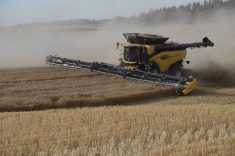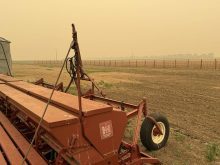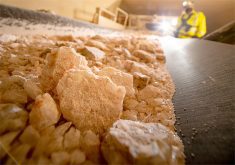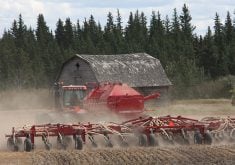Interest in adding grass seed production residues to cattle rations has been increasing in Manitoba, but a government forage specialist in that province is urging caution.
Glenn Friesen said livestock disorders have been observed in parts of Western Canada where turf-type perennial ryegrass and tall fescue residues were fed.
These disorders, known as fescue foot or ryegrass staggers, are attributed to fungal organisms called endophytes that live within the grass plant.
An endophyte is a fungus that lives symbiotically within the grass plant and produces toxins that confer disease and insect resistance to the grass. These traits are beneficial for turf-type fescues and ryegrasses grown in areas where insect and disease pressure can damage turf stands.
Read Also
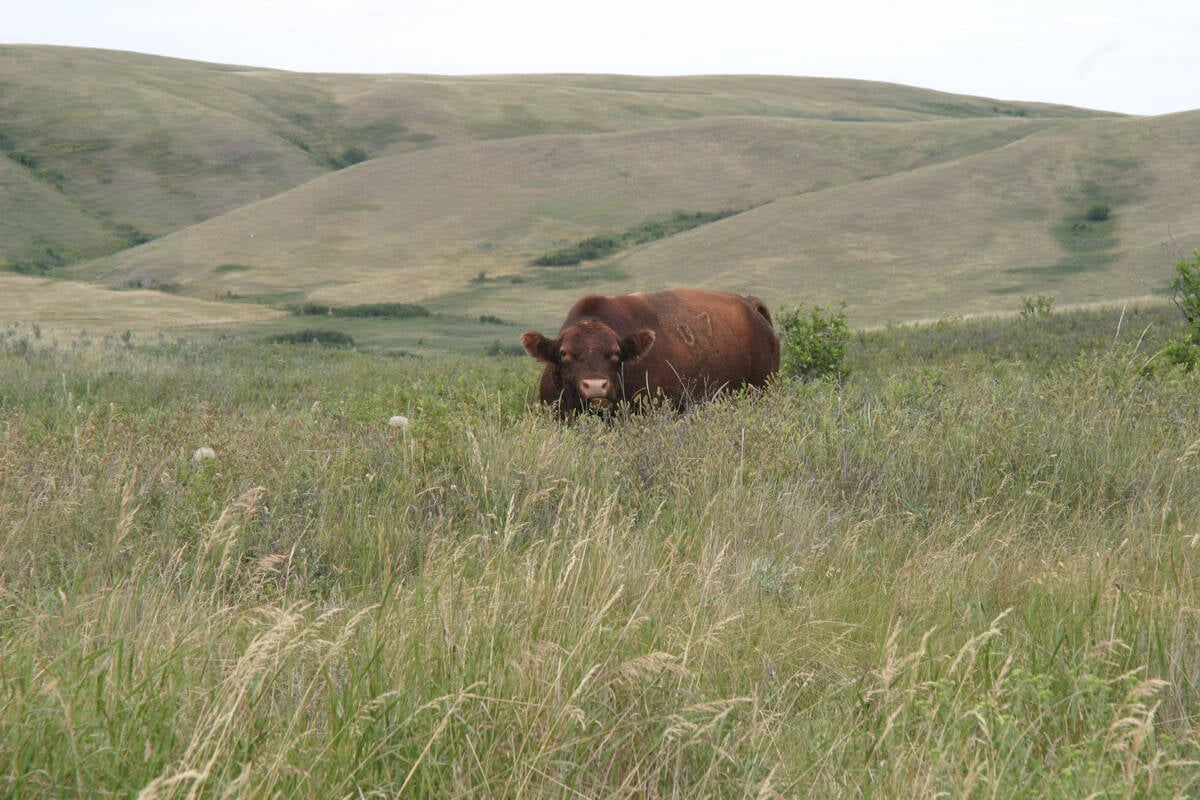
Saskatchewan puts crown land auction on hold
Auctions of Saskatchewan crown lease land are once again on hold.
However, these toxins can also cause health disorders in livestock. Caution should be exercised if turf-type tall fescue or perennial ryegrass residues are used in rations for ruminants and horses.
Endophyte fungi are transmitted only by seed. The entire life cycle of the fungus takes place inside the plant tissues. An individual plant will not become infected by neighbouring plants.
Different species of endophyte infect tall fescue and perennial ryegrass, producing different toxins.
Acremonium coenophialum infects tall fescue, producing ergovaline as the major toxin. Ergovaline is concentrated in the reproductive parts of the grass plant, especially in the seed heads and screenings. Pelleting the screenings does not reduce toxicity.
Acremonium lolii infects perennial ryegrass, and the major toxin produced is Lolitrem B. Ergovaline is typically a problem only in tall fescue and Lolitrem B is typically a problem only in perennial ryegrass.
Each type of endophyte produces different clinical symptoms. For ergovaline poisoning, they include hyperthermia or elevated body temperature, lower feed intake, weight loss, lower pregnancy rates and decreased milk production.
Horses are particularly sensitive to ergovaline and are prone to developing reproductive problems such as abortions, difficult births and foal deaths.
Fescue foot is also associated with ergovaline and is most apparent in the winter. Animals with this condition will develop swelling in the legs and restricted blood flow to the feet, causing tissue to die and hoofs to detach from the feet.
Lolitrem B causes ryegrass staggers, and symptoms can include tremors, severe lack of co-ordination and falling down.
This condition requires a seven to 14 day exposure period and clinical signs usually disappear in two to three days if animals are removed from feed that contain the toxin.
The recommended maximum restrictions were confirmed in a 1987 study that showed endophyte infected straw decreased forage intake but could be offset by supplementing with alternate noninfected sources of forage.
The study used clover and wheat straw as sources of non-infected forage. Later work, in which properly supplemented low quality straw containing up to 475 parts per billion of ergovaline was fed to steers, showed no negative effects on animal health, nutrition or performance.
Endophyte levels can vary between varieties, fields of the same variety and the time of year, so the only way to be certain of toxin levels is to test the straw. Perennial ryegrass and tall fescue can be tested for ergovaline and Lolitrem B contents by sending samples to 139 Oak Creek Building, Endophyte Service Laboratory, College of Agricultural Sciences, Oregon State University, Corvallis, Oregon U.S.A. 97331.
The tests cost $40 US each. The ergovaline test takes three to four weeks and the Lolitrem B test takes two to three weeks.
No permit or prior notice form is required to send these samples, but they are subject to inspection at the border so the envelopes must be clearly labelled “perennial ryegrass straw” or “tall fescue straw.”
Randomly collected samples can be made by collecting core samples from at least 20 bales. Make sure the samples are air dried to avoid spoilage and are kept out of direct sunlight.
Samples sealed in plastic freezer bags can be sent with appropriate contact information and payment.
For more information, phone 541-737-2872.
- Seed forage-type varieties of tall fescue and perennial ryegrass, with low or no endophytes, if seed production residues are to be used as animal feed.
- Since toxins are concentrated in the seeds, screenings from perennial ryegrass and tall fescue should never be fed to livestock.
- Test turf-type tall fescue and perennial ryegrass straw for ergovaline and Lolitrem B levels to determine the risk potential.
- Do not feed infected plants to pregnant or lactating animals. Pregnant mares are particularly at risk.
- Mix endophyte free forages with endophyte infected straw to reduce toxin levels in the total ration. Tub grinding and limited feeding of the infected forage are two options to consider.
- Animals fed a poor diet are more susceptible to toxicity. Ensure rations are properly balanced for energy, protein minerals and vitamins.
- The threshold levels for ergovaline and Lolitrem B can be affected by stress and environment. All animals fed endophyte-containing forages should be watched closely and the contaminated feed removed immediately if toxic symptoms are observed.
- Ammoniation of the straw has been shown to reduce toxicity.
- Use a chaff spreader to reduce the chaff content of straw because the endophyte content of chaff is usually higher than straw.






